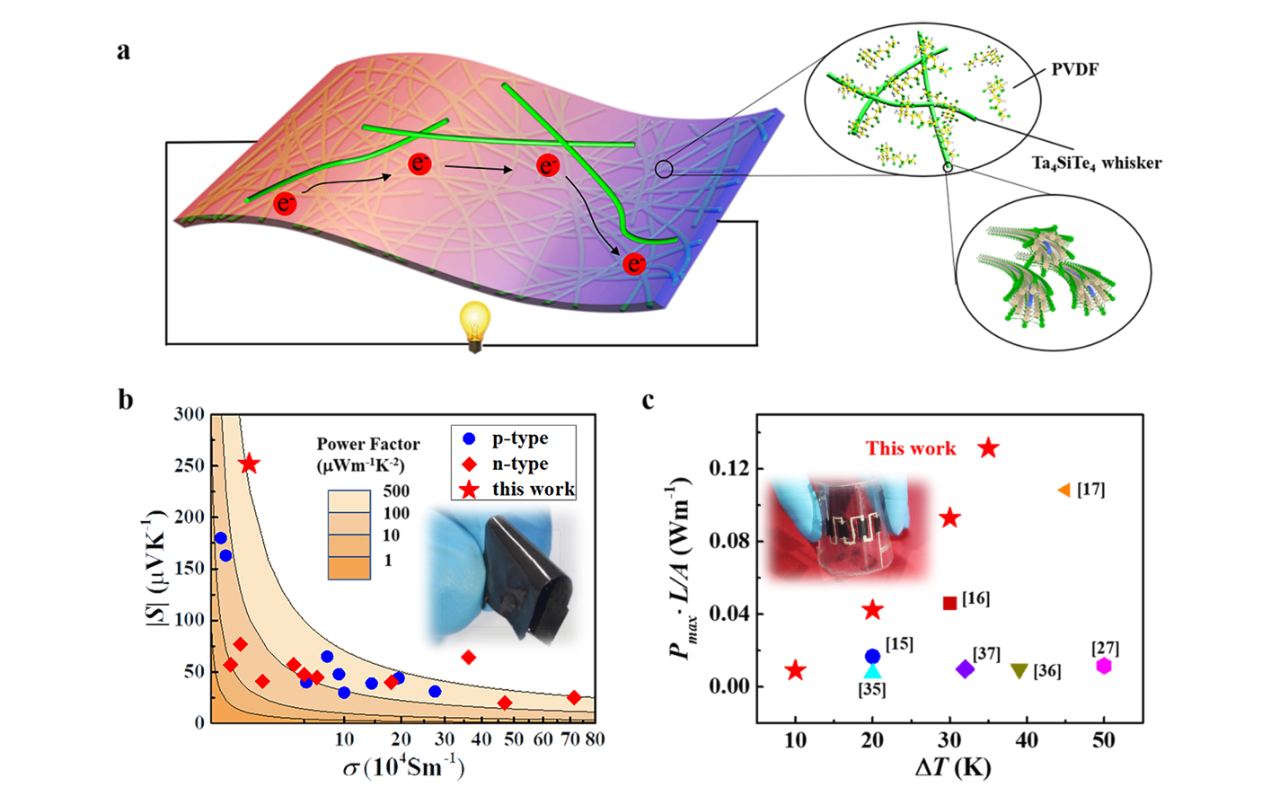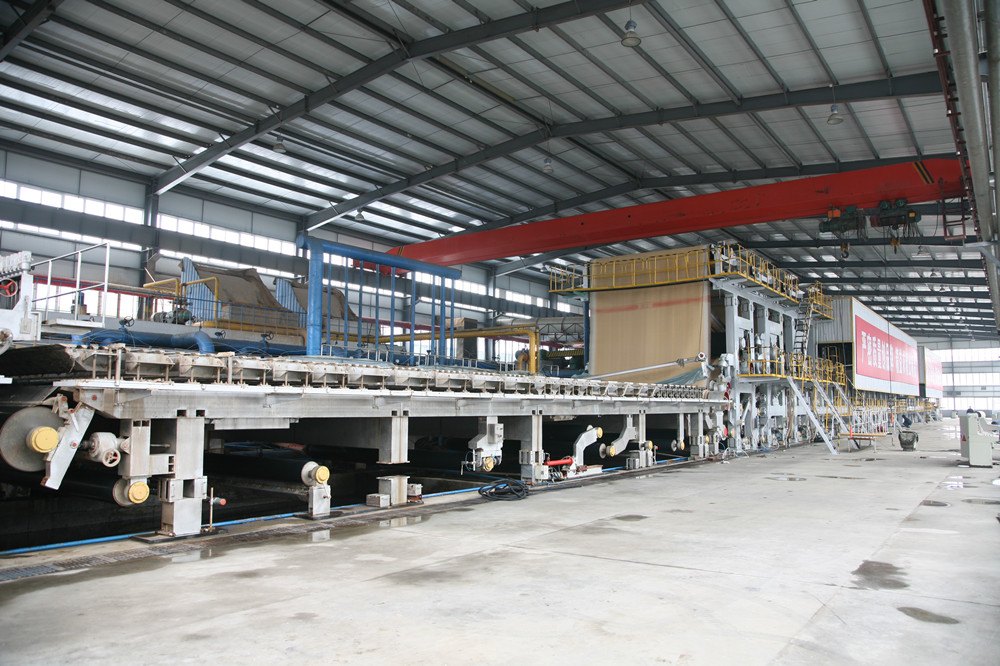[ Instrument R&D of Instrumentation Network ] Flexible thermoelectric energy conversion technology can convert the environment or human body temperature difference into electrical energy to realize the self-power supply of electronic devices, and has broad application prospects in wearable and other fields. Traditional inorganic thermoelectric materials have excellent thermoelectric properties, but do not have flexible functions; while organic thermoelectric materials have good flexibility and bending properties, but the thermoelectric properties are extremely low. Organic/inorganic composite thermoelectric materials can integrate the thermoelectric performance of inorganic materials and the good bending properties of organic materials, and have become a research hotspot in recent years. Carbon nanotubes or metal nanowires with a one-dimensional structure can form a tightly connected conductive network with one-dimensional molecular chains of organic materials, and provide highly conductive channels along the chain network, so they are often used in organic/inorganic composite thermoelectric materials. . However, the extremely low Zebeck coefficient of carbon nanotubes or metal nanowires makes it difficult to increase the Zebeck coefficient of composite materials. Although the inorganic thermoelectric material has a high Zebeck coefficient, its shape is usually in the form of flakes or particles, resulting in low electrical transport performance of the composite material. Therefore, how to select matching organic/inorganic materials to obtain good electrical transport has become a key scientific issue in the research of organic/inorganic composite thermoelectric materials.

Recently, Shi Xun, Chen Lidong, Associate Researchers Qiu Pengfei, Qu Sanyin, etc., researchers at the Shanghai Institute of Ceramics, Chinese Academy of Sciences, and He Jian, a professor at Clemson University in the United States, proposed a new dimension matching thermoelectric composite design strategy That is, using inorganic semiconductor materials with the same one-dimensional structure to prepare high-performance PVDF/Ta4SiTe4 organic/inorganic flexible thermoelectric composite films, the normalized maximum power density of the prototype device at a temperature difference of 35.5K is the highest among the currently reported flexible thermoelectric devices. value. Related research results are published in Energy & Environmental Science under the title of Conformal organic–inorganic semiconductor composites for flexible thermoelectrics.
The organic material polyvinylidene fluoride (PVDF) has a one-dimensional chain structure and is an insulator with excellent flexibility. Based on the design idea of ​​dimensional matching, the team chose Ta4SiTe4 inorganic material which also has a one-dimensional structure and PVDF to prepare an organic/inorganic flexible composite film. Through the chemical vapor transport reaction, Ta4SiTe4 one-dimensional whiskers doped with 0.5% Mo in the Ta site were obtained. Then, using N,N-dimethylformamide (DMF) as a dispersant, a PVDF/Ta4SiTe4 composite film was obtained by the method of drop coating. Scanning electron microscopy found that Ta4SiTe4 whiskers were evenly dispersed in the PVDF matrix to form a network structure. Transmission electron microscopy showed that Ta4SiTe4 whiskers and PVDF formed a tightly bonded two-phase interface. The thermoelectric performance characterization found that PVDF/50 wt% Ta4SiTe4 has excellent electrical transport performance, with a power factor as high as 1060 μWm-1K-2 at 220 K. In particular, at the same conductivity, the Zebeck coefficient of PVDF/50 wt% Ta4SiTe4 film is much higher than that of organic/inorganic composite films based on carbon nanotubes or metal nanowires. Ta4SiTe4's own semiconductor transport characteristics and one-dimensional structure jointly produce the above-mentioned excellent electrical transport performance.
While achieving excellent electrical transport performance, the organic/inorganic composite film formed by dimensionally matched PVDF and Ta4SiTe4 also has good flexibility. After repeated bending 5000 times on a curved surface with a diameter of 9 mm, the PVDF/50 wt% Ta4SiTe4 film resistance did not change significantly. The research team preliminarily prepared a prototype thermoelectric device containing 4 PVDF/50 wt% Ta4SiTe4 thermocouples. At a temperature difference of 35.5K, the normalized maximum power density of the device reached 0.13 Wm-1, which is the current reported flexible thermoelectric device. The maximum value.
The research work has received funding and support from the National Key R&D Project, the National Natural Science Foundation of China, the Youth Innovation Promotion Association of the Chinese Academy of Sciences, and the Shanghai Youth Science and Technology Star Project.
A4 Paper Machine
A4 Paper Machine
This is A4 Paper Making Machine,writing and printing paper making machine.

According to the different paper grade and working speed, this kind of paper machine is needed to select the way of papermaking, dewatering structure of press section, dryer cylinder bank, sizing and finishing equipments.
Sheet forming can use the open-type headbox, air-cushion headbox, and hydraulic headbox, gap former and inclined wire former. According to the paper uniformity requirement, it can use distributor roll or finishing surface roll.
Press dewatering type is multi-roll and multi-press nip press rather than large-diameter press. As the low basis weight and wet strength of this kind of paper, it usually makes the low strength wet sheet attached to the felt or guide rolls during each section mutual transferring and full web leading as much as possible.
Dryer section: dryer cylinder group. Paper leading: active or passive paper rope system. Finishing equipment: To choose according to the paper grade requirement.
Now we introduce the technical proposal and structural drawing of Fourdrinier advanced printing paper machine, which we made for Taiqian Minrui Huatong Paper Company in Henan province, China. The advanced printing paper of this company is the famous brand in China.
Trimmed width: 2640mm
Working speed: 400m/min
Basis weight: 50-100g/sq.m.
Headbox: Air-cushion headbox
Forming table length: 15m
Suction flat box with all stainless steel micro-crystal cover.
Press section: four rolls two press nips
The wet sheet is stripped by pick-up suction unit.
The second under press nip rubber blind bottom roll diameter is Φ800mm, with drive unit;
The suction top roll diameter is Φ800mm, with drive unit.
The top press nip is made by a stone roll and a rubber roll. The rubber roll diameter isΦ800mm, with drive unit;
The stone roll diameter is Φ850mm, with cut squirt.
This structure ensures the low strength wet sheet can press smoothly and paper breaks can be reduced.
The smooth press rubber bottom roll diameter is Φ800mm; the top stone roll diameter isΦ850mm. The paper leading roll has the drive unit.
The dryer section has 32 dryer cylinders with the diameter of Φ1800mm, which is divided into five groups: three groups for before-sizing, two groups for after-sizing. The top and bottom felt of first group and the group at the back of sizing machine is equipped with six felt drying cylinder with the diameter of Φ1250mm, which can dry the moisture well and improve the drying efficiency.
The paper leading roll has the drive unit. The paper leading type is three-stage passive paper rope system.
Sizing machine: inclined type surface-sizing machine.
Calender: four roll three press nips; the number is decided by the demands.
Reeler: horizontal pneumatic reeling machine.
If you are interested in our products, please feel free to contact us for more information, we are glad to give you the competitive quotation upon receipt of your detailed requirements.
A4 Paper Making Machine,A4 Paper Machine,Writing And Printing Paper Machine,A4 Copy Paper Making Machine
Dandong Tianshin Automatization Technology Co.,Ltd , https://www.ctpmmachine.com

